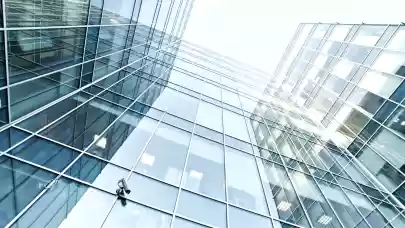
Cushman & Wakefield has summarised the first quarter of 2021 in the CEE commercial real estate market. Investment volume at the end of the first quarter stands at €2 billion, down by around 20% compared to the same period in 2020.
The allocation of capital to be deployed remains very high relative to the investible product. For this reason, as the perception of uncertainty calms, we expect transaction volumes to begin to increase again. Markets across CEE have different dynamics related to the scale and activity of local capital sources and demand and supply fundamentals in the investment and occupiers markets.
Poland and the Czech Republic remain the most liquid markets, with the Czech Republic being constrained by a lack of institutional product and Poland by the scale of individual assets (at least in the office sector) and the risk associated with older assets or those entering a leasing cycle. Notwithstanding this, we expect more clarity in investor underwriting (the occupier market) and the mounting pressure of capital deployment to result in more transactions closing.
“The industrial sector is currently the most investable. however, multifamily continues to attract attention, albeit there may be some time before volumes can compete with office and industrial. Regards retail, there is now some evidence that assets can be priced" says Jeff Alson, CEE Partner, Capital Markets Group, Cushman & Wakefield.
POLAND
Investment volume in Poland during Q1 2021 reach €1bn, c. 40% below same period in 2020 but 26% above Q1 2019. More than half of the investment volume was in the office sector, mainly driven by the transactions of Neopark in Warsaw Mokotow, Villa Offices in Warsaw Brewery, NEON in Tricity, and the BUMA office portfolio. The logistics sector followed with c. 29% of total volume, and then retail with c. 17%, including the transactions of the Tesco portfolio, Galeria Pestka and Chariot. The outlook for Q2 is a continuation of cautiousness by investors and preparation for launching sale processes which are expected to materialize in Q3/Q4.
CZECH REPUBLIC
Not shortage of capital but the lack of “obvious” product is resulting in more creative approaches by investors, including exploring more multifamily opportunities and aggressive pricing where traditional new core office or industrial product be can be unlocked.
SLOVAKIA
We see a strong start of the year by launch several transactions that are likely to reverse last years decrease in overall investment activity. Expectation is that industrial will lead the game in terms of the yield curve while in other segments we will see the completion of several transactions that were lagging also due to the COVID outbreak in 2020.
HUNGARY
Whilst there has been an understandably slow first quarter, with investors seeking clarity on the mid-term impact of the pandemic on end users, the occupational fundamentals remain strong – which should lead in increased activity as the year progresses.
ROMANIA
The first quarter of 2021 has seen a continuation of the positive trend from the previous quarter, with interest from investors to look at opportunities growing steadily. We see this from funds both invested in Romania and new capital looking to enter the market. The outlook looks positive in terms of active demand and new supply of assets for sale. We anticipate total volumes by year end 2021 to be similar to that of 2020 (c.a €900 mln), possibly a bit lower if some larger transactions run into 2022. Industrial & logistics remains the preferred asset class.



